The words “full moon” in many languages

It is said that there are more than 6,000 languages worldwide (this is hard to imagine) and it is a fascinating concept to think, there are probably as many words for “full moon”.
Here we begin our little journey to the full moon. A few words about the fascinating quest of the greater purpose, that includes the full moon circulating through our lives. In layman’s terms and not always scientific (astronomy experts – don’t look too closely!). We would like to wish you illuminating moments. Enjoy!


It is said that there are more than 6,000 languages worldwide (this is hard to imagine) and it is a fascinating concept to think, there are probably as many words for “full moon”.
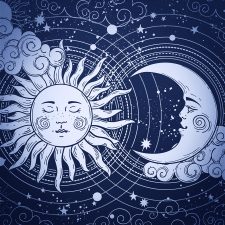
A full moon is when the Sun and the Moon are facing opposite, being in opposite direction from an Earth perspective.
This might feel astonishing if one imagines that the Moon is on one side, the Sun on the other and the Earth in between? Shouldn’t the Earth throw a shadow onto the Moon? Bingo – this is exactly what she does! But only when the Moon is exactly on the Earth orbit, the so called “ecliptic”. When this takes place, we speak of a lunar eclipse!
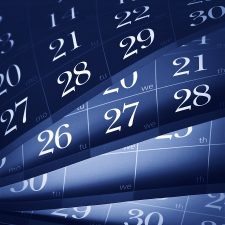
The Moon needs 27.33 days to circle around the Earth. Something that is also referred to as “sidereal time”. But because the Earth orbits the Sun, just like the Moon orbits the Earth, the Moon has to travel two further days in order to resume the same position to the Earth and Sun. This is then called the “sidereal time”. In order to determine the point of time of the reoccurring full moon, the sidereal time serves as basis.
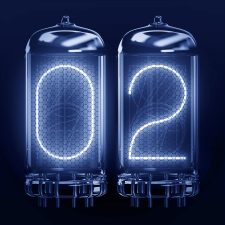
We already know now that the moon month is mostly shorter than the calendar month, being on average approximately 29.5 days. If full moon falls on the first or second of a month, it is possible that another full moon occurs in the same month, for instance in July 2004:
Friday, 2 July 2004, 01:08:54 pm
Saturday, 31 July 2004, 08:05:06 pm
This event is also known as “blue moon”.

The answer is: “everywhere at the same time”. This refers to the so called Universal Time (UT) though, which is used for general astronomical events. We have already learnt that full moon is an astronomical event, where the moon, sun and the earth play a role by being in a specific position. So, full moon takes place at a specific time in the outer space. This point of time is specified by astronomers namely by the Universal Time.

There are multiple ways of approaching this question. If we look at it from a purely theoretical standpoint, we might be tempted to say that the full moon is infinitely short, since the phases of the moon are changing continuously. The moon is not yet quite full shortly before the full moon, and is already waning shortly afterwards.
However, there is a practical aspect that lets us quantify the full moon as a finite and measurable span of time: Since the Sun is significantly bigger than the Moon, its rays are able to reach just a little over half of the Moon’s surface. This means that the timespan in which the visible side of the Moon’s surface is irradiated (as seen from Earth) is longer than infinitely short.

Whether scientists, astrologers or esoterics, they agree on one thing: the moon influences earth and life on earth. For instance, it regulates the tides through its magnetism. Also continents feel the consequence of this magnetism and either raise or lower their position sometimes up to 26 cm.

In nature it is a known fact: for some animal species, mating takes place at full moon. However, the examples that can be found on this subject are rather simple. Full moon serves in some cases indirectly as the cause (for instance through the high water levels during the tides that the horseshoe crab uses to deposit its eggs) or also as the signal for both sexes of a species to begin at the exact same time to safeguard their future existence (a particular type of fly or also corals). It is understood that also wolves are led by full moon when it is time to mate.

… that people are looking for an argument at full moon or are especially happy …
… that if full moon is surrounded by a haze, a person dies …
… that you raise your hat three times to the moon (being a man) or you make a curtsey (being a woman), in order to protect yourself from misfortune until the next full moon …
… that whoever does not chink glasses with full moon at least once, does not deserve any happiness [Greek toast] …
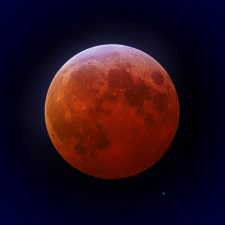
During a lunar eclipse, the Moon moves through the shadow of the Earth. Which means, that the Earth is positioned quite exactly between the Sun and Moon and casts its shadow onto the Moon. This is only possible at full moon and if some other requirements are met. Depending on whether the moon passes the partial or the core shadow of the Earth, we speak of a partial or total lunar eclipse.

Other than the moonstone, there are more minerals with the Moon being part of their name: the moonlight topaz. The topaz is a compound of aluminum, fluorine and silicon and has the hardness value of 8, on the Mohs scale of mineral hardness from 1 (= selenite) to 10 (= diamond). Which means it is a very hard mineral. Topazes exist worldwide, but most findings originate in Brazil. When conditions are favorable for the growth of this mineral, their weight can easily reach up to 220 lb and more. The biggest topaz that was ever found, was 3.3 ft long and weighed 2.5 tons (Mozambique, Africa).

The German poet and novelist Joseph Freiherr von Eichendorff (1788–1857) counts among the foremost representatives of Romanticism. Many of his poems had been set to music and were sung.
Von Eichendorff, born in Ratibor (today Racibórz in Poland), studied originally law and worked in a variety of administrative civil service positions, up until he retired. Simultaneously, he devoted his time to his writing and publishing skills, until he died from pneumonia in 1857.
Again and again it is spoken about the Moon in the night sky, and the visible size for us here from Earth and we would like to recall some details or outline and summarize them again:
The Sun and the Moon about the same size in the sky
The full moon in the sky appears to have almost the same size as the Sun by day, because the Sun is approx. 400 times as large as the Moon, but also 400 times further away. So it balances itself out and this is how these two very different sized orbs appear to be of the same magnitude to us.

Are we alone in the universe? Are there other intelligent forms of life in space or are we alone? These questions have been on mankind’s mind, since we consciously reflect our existence and raise our gaze toward the starlit sky.
With the beginning of space travel, there arose the idea, of sending messages to potential extraterrestrial life. The question, which information is suitable, a representative picture of the entire human race and their lives on planet Earth, is particularly exciting.

The full moon has always been a companion through time, through months, through seasons and the entire year. In the early days even more so, because daily life of people had not been strictly ruled by the clock yet. It was the sun that determined the day and the moon that brightened the night. Nowadays, clock and calendar are our time scales, which is advantageous but also contains a dark side. You unlearn more and more to estimate time periods and to experience them consciously. We have almost forgotten to perceive how different a full moon feels like in December compared to a full moon in July …

We have already reported about the subject »Sleeping at the full moon« with the insight that the phenomenon of a restless or bad sleep around the full moon apparently exists for many people, however, we are groping in the dark if looking at the background. Generally, sceptics claim that the insufficient sleep is connected to the fact that the people concerned are more or less aware of it being full moon and therefore eventuate a self-fulfilled prophecy. Those affected, counter that they often find out afterwards whether it was the full moon or it had not occurred to them yet to make this connection at all.
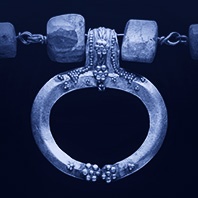
In the Ancient Roman Empire, lunula amulets were often worn as a lucky charm, but also as protection against evil forces and demons. Special crescent-shaped jewelry pieces were made for girls, to grant them the protection of the goddess Diana. Diana is the goddess of the Moon and also of hunting in Roman mythology. Artemis is the equivalent among the Greek Gods.
Let’s begin the New Year 2011 with the opening of the full moon blog. A true innovation to the full moon pages.
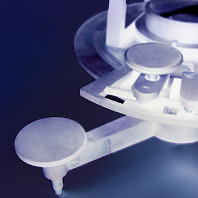
For everyone, who is not quite sure what a blog is, let’s say it is a kind of an Internet diary. The word »blog« is an abbreviation of »weblog«, which again derives from »web« (for Internet) and »logbook«, a term used in maritime shipping for recording daily events. Interestingly enough, it is mentioned in WIKIPEDIA that logbooks are of great importance in legal cases involving maritime commercial disputes, and therefore mandatory to be kept and not on a voluntary basis. As blogger (name of someone who writes in a blog), we certainly would not keep this rule, but encourage spontaneous participation and think it should be fun, and whenever possible, we will establish a connection to the full moon.
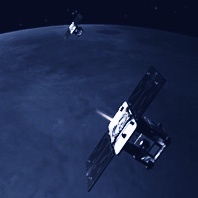
A probe is an unmanned flying object, which explores space. Different to a satellite, a probe does not circle the Earth but flies to other celestial bodies, which they circle, too, but are then called orbiters. Two of these probes have been on the way to the Moon since 10th September 2011, to take measurements with unprecedented accuracy. The GRAIL lunar probes have reached the orbit of the Moon as planned, at the turn of the year 2011/12 and are now currently at work, until they will shatter on the Moon’s surface. In the meantime, they will have transmitted lots of data back to Earth.

Who does not know the story of Peter Pan, the boy who does not want to grow up. It is already more than 100 years old (premiered as stage play in London in 1904) and has been adapted to countless screen versions. And next to all the imaginative characters, one encounters repeatedly one thing: the full moon.